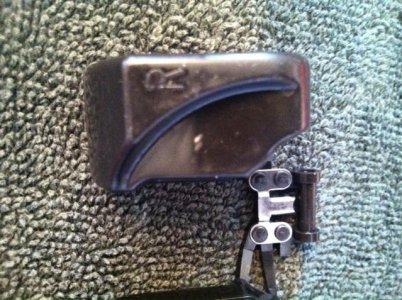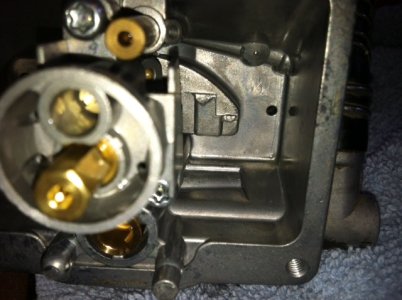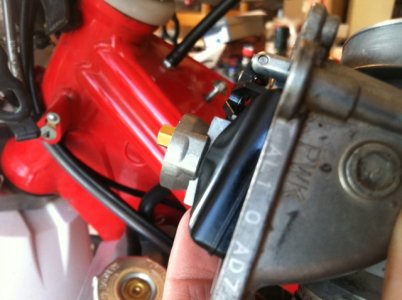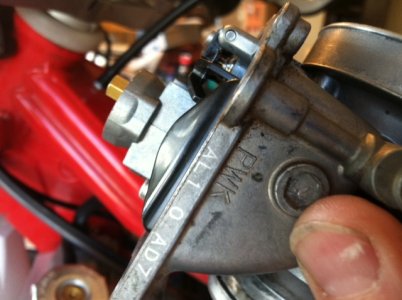andoman
New member
I have read a lot recently about poor fuel economy and the adjust-ability (or lack thereof) of the float height of the the ASII. I only have a couple of hours on my '11 EC 300, but with a 40 pilot, E3CH needle in #2, and a 172 main at 5000 feet, I shouldn't use half a tank in an hour of trail riding.
I read that the "adjustment tang" was plastic and could not be adjusted. I opened mine up to find out for myself and thought I would share some interesting fact that I learned.
Pix #1: you can see that the adjustment tang on mine is indeed metal and will bend. I was very careful, because the whole float assembly looks pretty flimsy.
Also, note the witness mark in the center of the right float. It is obvious that the top of the float has been spending some time pinned against the top of the float chamber... In fact, when I turned the carb upside-down, the weight of the float caused it to lay hard against the top of the chamber with no perceptible cushioning by the viton tip of needle in the seat.
Pix #2: The rough casting in the center at the top of the float chamber is what caused the witness mark on the float.
Pix #3: This view confirms that the float height as referenced to the seam in the float is not usable in the ASII. when the float is level to the carb body, the seam is well below the bowl-carb mating surface.
Pix#4: After bending my tang, the carb angle is changed perceptibly in the "lower fuel level" direction. There is also a perceptible contact cushion of the viton tip of the needle.
I have to wait to get my suspenders back from Les at LTR before I can give accurate milage nos. But I will follow up with the info here.
I read that the "adjustment tang" was plastic and could not be adjusted. I opened mine up to find out for myself and thought I would share some interesting fact that I learned.
Pix #1: you can see that the adjustment tang on mine is indeed metal and will bend. I was very careful, because the whole float assembly looks pretty flimsy.
Also, note the witness mark in the center of the right float. It is obvious that the top of the float has been spending some time pinned against the top of the float chamber... In fact, when I turned the carb upside-down, the weight of the float caused it to lay hard against the top of the chamber with no perceptible cushioning by the viton tip of needle in the seat.
Pix #2: The rough casting in the center at the top of the float chamber is what caused the witness mark on the float.
Pix #3: This view confirms that the float height as referenced to the seam in the float is not usable in the ASII. when the float is level to the carb body, the seam is well below the bowl-carb mating surface.
Pix#4: After bending my tang, the carb angle is changed perceptibly in the "lower fuel level" direction. There is also a perceptible contact cushion of the viton tip of the needle.
I have to wait to get my suspenders back from Les at LTR before I can give accurate milage nos. But I will follow up with the info here.




